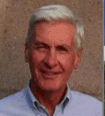Frank Bohlen
Emeritus Professor
Department of Marine Sciences
Expertise: numerical modeling, dynamics/transport of fine-grained sediments in coastal and estuarine waters
My research program is designed to increase our understanding of the dynamics governing the transport of fine-grained sediments in coastal and estuarine waters. In broad outline, this program consists of three principal components: field and laboratory experimental studies, instrument design and development, and numerical computer modeling. The field and laboratory investigations seek primarily to document the response of the sediment-water interface to both long-term persistent and short-term aperiodic, storm related factors. Many of the instrument systems required to obtain these observations have been designed and constructed at the University of Connecticut. Data provided by the deployment of these arrays in a variety of coastal environments has shown the interfacial response to be highly non-linear and significantly variable in both space and time. Such variability complicates specification of transport algorithms in numerical predictive models. Ongoing work seeks to extend and refine these observations to permit resolution of the specific factors governing transport non-linearities including consideration of biologically mediated variations in sediment fabric, particulate associated alterations in boundary shear stress, and advective effects associated with variations in the local flow field.
The experimental work will require continuing redesign and modification of the available instrument arrays. Existing optical systems, presently used to monitor suspended material concentrations, are to be improved and supplemented by a variety of acoustic systems in order to increase both spatial and temporal resolution. In addition, the field arrays are to be supplemented by a series of sensors intended to detail the fabric of the sediment column in the immediate vicinity of the sediment-water interface. A number of systems are to be tested including radioactive probes, acoustic and electromagnetic systems and simple mechanical probes with ultimate selection based on simplicity of operation and reliability and the potential to yield vertical resolution over scales of 1 mm or less.
The variety of experimental work is being complemented by concurrent continuing development of a series of numerical models intended to incorporate the laboratory and field data for calibration purposes and to permit the extension of these data in space and time for predictive purposes.
